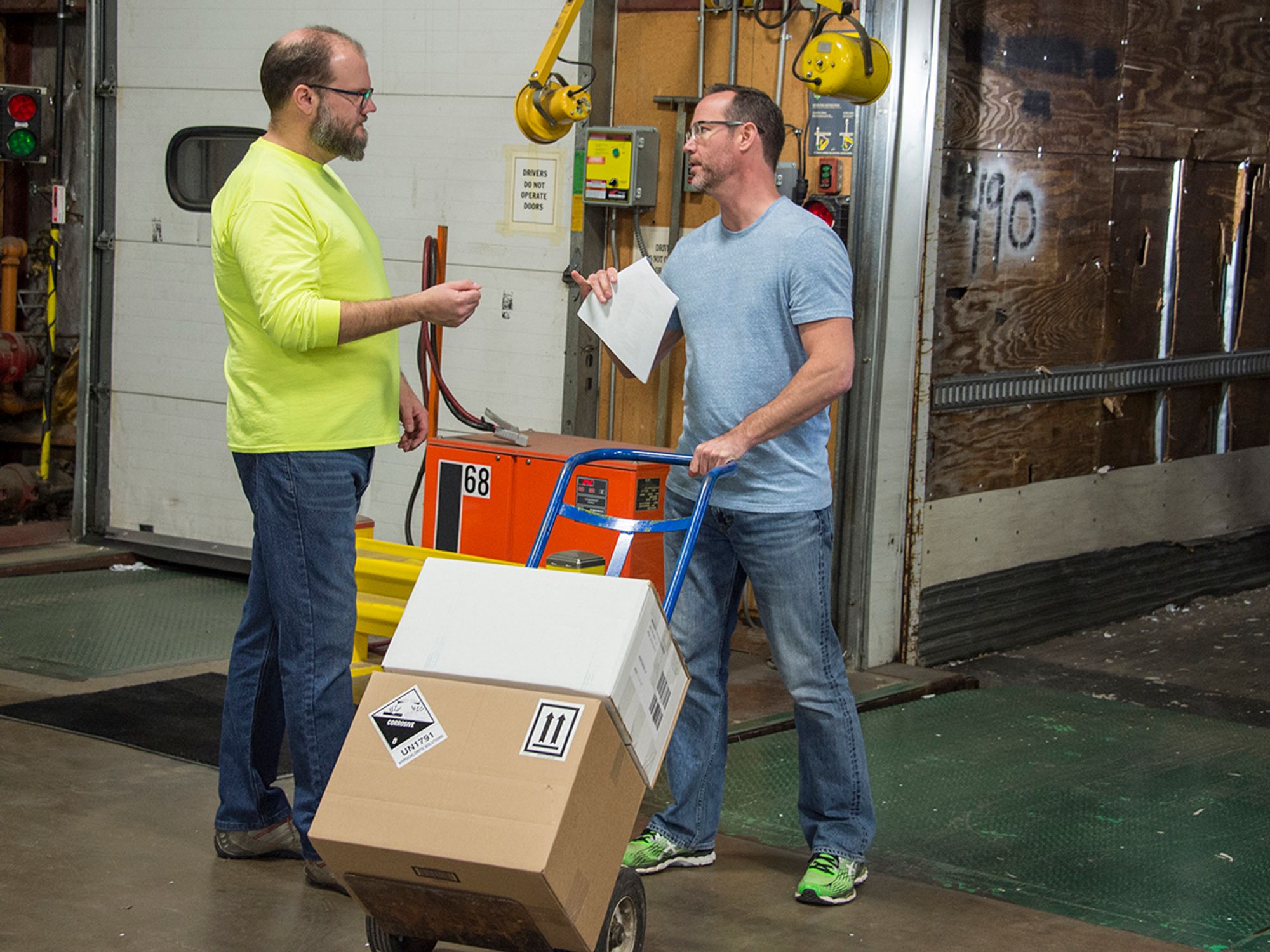Dangerous goods training requirements

- Anyone who handles or transports dangerous goods must be adequately trained and hold a training certificate or perform the activities under the supervision of a person who holds a training certificate.
- To be adequately trained means the person has a sound knowledge of a number of topics that directly relate to the person’s duties and to the dangerous goods handled, offered for transport or transported.
- Additional training is required for marine transport or air transport of dangerous goods.
Anyone who handles, offers for transport, or transports dangerous goods must:
- Be adequately trained and hold a training certificate, or
- Perform the activities in the presence and under the direct supervision of a person who is adequately trained and who holds a training certificate.
An employee must not handle, offer for transport or transport dangerous goods unless the employee:
- Is adequately trained and holds a training certificate, or
- Performs the activities in the presence and under the direct supervision of a person who is adequately trained and who holds a training certificate.
“Adequately trained” means the person has a sound knowledge of all the topics listed below that directly relate to the person’s duties and to the dangerous goods handled, offered for transport or transported.
The topics include:
- The classification criteria and test methods in Part II, Classification;
- Shipping names;
- The use of Schedules I, II, and III;
- The shipping document and train consist requirements in Part III, Documentation;
- The dangerous goods safety marks requirements in Part IV, Dangerous Goods Safety Marks;
- The certification safety marks requirements, safety requirements and safety standards in Part V, Means of Containment;
- The emergency response assistance plan requirements in Part VII, Emergency Response Assistance Plan;
- The report requirements in Part VIII, Accidental Release and Imminent Accidental Release Report Requirements;
- Safe handling and transportation practices for dangerous goods, including the characteristics of the dangerous goods;
- The proper use of any equipment used to handle or transport the dangerous goods; and
- The reasonable emergency measures the person must take to reduce or eliminate any danger to public safety that results or may reasonably be expected to result from an accidental release of the dangerous goods.
For air transport, additional training must include the aspects of training set out in Chapter 4, Training, of Part 1, General, of the ICAO Technical Instructions for the persons named in that chapter and the requirements in Part XII, Air.
For marine transport, additional training must include the requirements set out in the International Maritime Dangerous Goods (IMDG) Code and the “Dangerous Goods Shipping Regulations,” as applicable, and the requirements in Part XI, Marine.
See Part 6 of the Transportation of Dangerous Goods Regulations for complete training requirements.
Driver training
Dangerous Goods training is an important part of driver training in Canada, and the Transportation of Dangerous Goods (TDG) regulations reflect that importance. Not only are Canadian drivers expected to learn everything there is to know about transporting dangerous goods in Canada, drivers coming across the border are also expected to be trained at a high level, too.
Adequate training
How much training is required? The TDG Regulations state that a person is adequately trained if the person has a sound knowledge of the following topics that relate directly to the person’s duties and to the dangerous goods the person is expected to handle, offer for road transport or transport by road:
- The classification criteria and test methods in Part II, Classification;
- Shipping names;
- Use of Schedules I, II, and III;
- The shipping document and train consist requirements in Part III, Documentation;
- The dangerous goods safety marks requirements in Part IV, Dangerous Goods Safety Marks;
- Certification safety marks requirements, safety requirements, and safety standards in Part V, Means of Containment;
- The emergency response assistance plan requirements in Part VII, Emergency Response Assistance Plan;
- The report requirements in Part VIII, Accidental Release and Imminent Accidental Release Report Requirements;
- Safe handling and transportation practices for dangerous goods, including the characteristics of the dangerous goods;
- Proper use of any equipment used to handle or transport the dangerous goods;
- Reasonable emergency measures the person must take to reduce or eliminate any danger to public safety that results or may reasonably be expected to result from an accidental release of the dangerous goods;
- Additional training may be required for transport by air or water, as outlined in the TDG Regulations.
